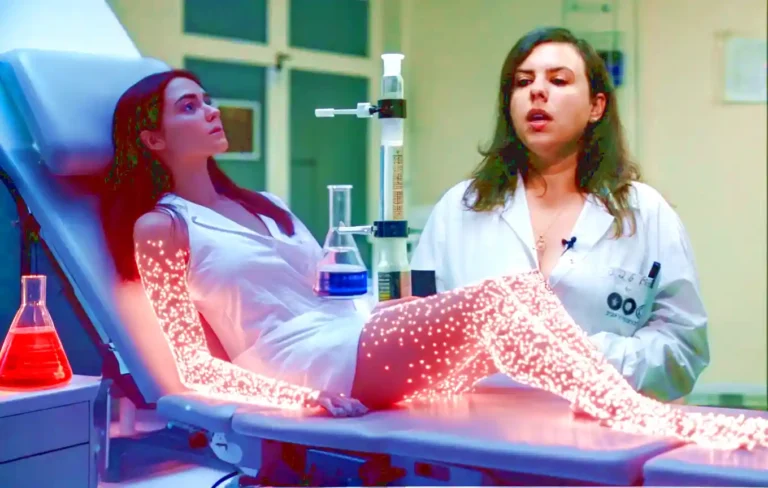Imagine that getting sick could be as easy as doing a home pregnancy test. You won’t have to wait long or pay a lot for the test. You’ll just have access to quick, accurate data. That time has already come, though, thanks to diagnoses based on CRISPR. CRISPR was first created as a way to change genes, but now it is being used to find diseases more quickly, cheaply, and correctly than before. This new technology is revolutionizing healthcare by making it easier to find things like signs of cancer and virus diseases. The best part? Things are only getting better.
What Is CRISPR Diagnostics?
The first thing that was found about CRISPR was that it helps bacteria fight off viruses. Scientists saw how useful it could be and made it into one of the most powerful tools ever for changing genes. It’s now moving into the testing world.
Think of CRISPR as a search dog that has been taught very well. It doesn’t look for drugs or lost people; instead, it finds and sticks to certain DNA patterns. It starts a Cas protein (Cas12 or Cas13, based on the test) when it finds its target. Then, this enzyme cuts close molecules, which sends a warning that a disease is present.
Isn’t that sound like the future? The best thing about this technology is that it is already being used in the real world.
How CRISPR Diagnostics Are Changing Healthcare
Tests that use CRISPR are changing up the medical world by:
- Faster Results: Forget waiting days for lab results. In less than an hour, CRISPR tests can give you answers.
- Higher Accuracy: These tests are very sensitive and can find viruses, bacteria, or cancer signs that are very small.
- Cost-effective Solutions: CRISPR-based diagnostics don’t need as many expensive tools as standard PCR tests.
- Point-of-Care Testing: Some CRISPR tests are made to be used outside of labs, which makes them perfect for places that are hard to reach.
Popular CRISPR Diagnostic Platforms
SHERLOCK and DETECTR are the two most well-known CRISPR tests. No, they are not brand-new police shows on TV. They are cutting-edge tools for finding diseases.
1. Sherlock (Specific High-Sensitivity Enzymatic Reporter Unlocking):
This method was created at MIT and uses Cas13 to find RNA patterns that are linked to diseases like COVID-19 and tuberculosis. As a result? A compact test that is very effective and can be used anywhere.
2. DETECTR (DNA Endonuclease Targeted CRISPR Trans Reporter):
Jennifer Doudna’s team at UC Berkeley made DETECTR, which uses Cas12 to find DNA patterns in viruses and cancer biomarkers. It was one of the first tests allowed to use CRISPR to find COVID-19.
Both systems can find more than one disease with a single test, which changes the way testing is done in the future.
CRISPR Diagnostics In Action
CRISPR diagnostics are already making waves in detecting:
- COVID-19: SHERLOCK and DETECTR were quickly changed to work for pandemic tests, giving quick and accurate findings.
- Tuberculosis: CRISPR testing has shown considerable potential for identifying Mycobacterium tuberculosis, a serious worldwide health issue.
- Malaria: Research has shown that CRISPR can find different bugs that cause malaria in blood samples.
- Cancer: CRISPR is now being used to find signs that are special to cancer in blood tests. This lets doctors find and keep an eye on the disease early.
Future Innovations In CRISPR-based Testing
Just wait until you see how cool CRISPR diagnoses will be after a while. Scientists are always coming up with new ways to make this technology better.
- More CRISPR Systems: Scientists have recently found 188 new gene modules that are linked to CRISPR. This means that the technology could be used in more accurate and varied ways.
- Over-the-Counter STI Testing: A quick, self-administered test for chlamydia and gonorrhea is being tested in people by Sherlock Biosciences right now. This could make checking for STIs as easy as checking for pregnancy if it works.
- Machine Learning Integration: AI and CRISPR tests are beginning to work together, which will make them more accurate and allow them to find diseases automatically.
- Multiplexed Testing: In the future, CRISPR tests could find more than one disease in a single reply, making them a one-stop spot for diagnosis.
The Road Ahead
There are still problems that need to be fixed before CRISPR-based tests can be used widely. Scientists are trying to make these tests even easier to get while also reducing the number of fake hits and blanks. Not getting approval from regulators is another problem, but work is being done.
CRISPR is making great strides right now, and soon, it might be as easy to find diseases as it is to do a home pregnancy test. Imagine being able to buy a CRISPR test kit at the store and get a report right away without having to go to a doctor.
Diagnostics isn’t just going to change in the future. It’s already here, and CRISPR is the one that made it possible.







